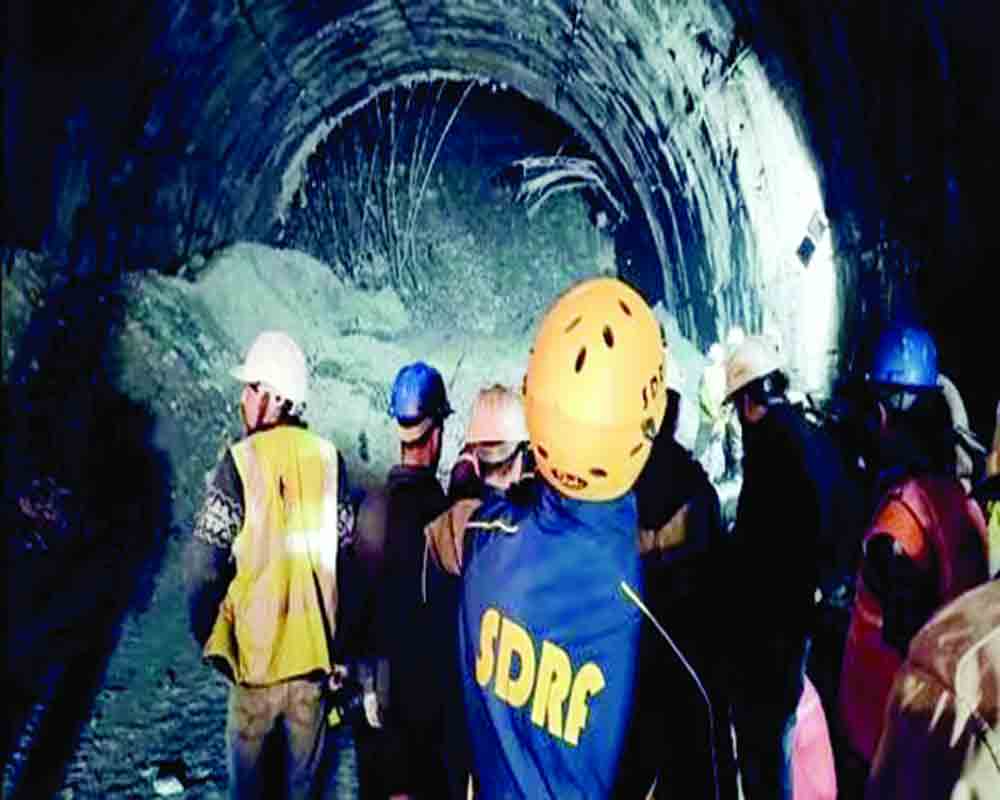Why undertake heavy-duty ‘development’ projects that the fragile Himalayan range cannot cope with?
Time and again, Nature has indicated --- sometimes even severely ---that the Himalayas are a fragile ecosystem. Despite earlier warnings in Himachal Pradesh, Sikkim and Uttarakhand itself, we do not learn any lessons and keep meddling with it. Now, the lives of 40 construction workers trapped inside a collapsed tunnel in Uttarkashi hang in balance even as massive machines are pressed into service to clear the debris. The construction is meant to improve access to the four major shrines which attract lakhs every year. However, the impact of such projects on the fragile ecosystem has been a subject of much controversy. Glacial melting leading to flood outbursts and more cases of landslide, exacerbated by heavy rains, have alarmed environmentalists and court-appointed experts. The urgency of the Uttarkashi situation has heightened as the workers' families and colleagues are protesting for swift action. Since Sunday, the workers have been stranded 500 ft from the tunnel's entrance, relying only on the food, water and oxygen sent through pipes. Initial rescue attempts involving drilling equipment and excavators were abandoned after a heavy machine caused more debris to block the way and injured rescue workers. The authorities have now deployed a more sophisticated machine capable of drilling through the debris. The plan involves creating a passage with steel pipes to facilitate the workers' escape without the risk of falling debris.
International experts, including from a Thai company that assisted in the 2018 cave rescue and the Norwegian Geotechnical Institute, have also been rushed in to evacuate the trapped workers. The Himalayan States, and Uttarakhand in particular, have experienced a recurring pattern of natural disasters, including earthquakes, landslides and glacial floods. The 1991 Uttarkashi earthquake, the 1998 Malpa landslide, the 1999 Chamoli earthquake, the 2021 Chamoli glacier flood and the 2013 Kedarnath flood devastation are all cases in point. This recurring cycle of destruction and death has the local population in a dilemma as they witness massive infrastructure projects labelled "development" while simultaneously bearing the brunt of climate-related disasters. Sinking incessantly, Joshimath continues to be a ticking time bomb. Yet, a vicious cycle of construction and destruction continues to take a heavy toll on human life. As the rescue operation unfolds in Uttarkashi, the incident once again sheds light on the need for careful consideration before undertaking any major development project in ecologically sensitive areas across the nation, be it dense forests in the hinterland or the Western Ghats or the Himalayan range. The priority for now is the safety of the trapped workers, but broader implications underscore the importance of balancing development with environmental preservation. The delicate ecosystem of lower Himalayas requires a well-considered approach to ensure the wellbeing of both the locals and the region.


























